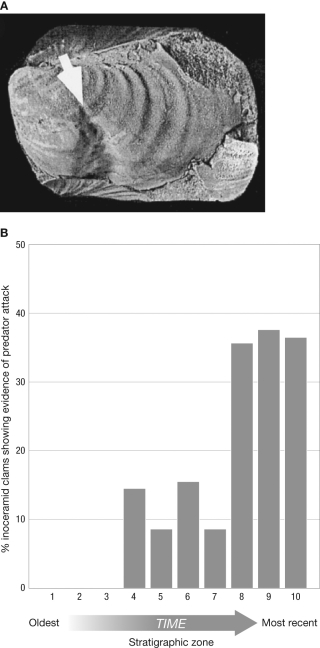Multiple Choice
For much of the Cretaceous, bivalves belonging to the Inoceramidae were among the most prominent bottom dwellers in aquatic communities, but then declined at the end of the Cretaceous, eventually going extinct. What does the figure tell us about the reason(s) the inoceramid species went extinct? 
A) Shell deformities observed in fossils indicated a significant change in the chemistry of the oceans, which likely led to the extinction of the Inoceramidae.
B) Shell deformities observed in fossils indicated a significant increase in ocean temperature, which led to malformation of shells during development, causing the subsequent extinction of the Inoceramidae.
C) Shell deformities observed in fossils indicated a significant increase in predation, which likely led to the extinction of the Inoceramidae.
D) Shell deformities observed in fossils are difficult to interpret and could result from many factors.
Correct Answer:

Verified
Correct Answer:
Verified
Q28: Describe the example of indirect effects on
Q29: What particular trait made it more likely
Q30: While studying a group of ammonites
Q31: You are a paleontologist studying the fossil
Q32: The K-Pg extinction was likely the result
Q34: Where would you place the actual extinction
Q35: Why do paleontologists find many more fossils
Q36: The graph shows the extinction rates for
Q37: Native plant A is endangered. You suspect
Q38: The figure below shows the increasing morphological